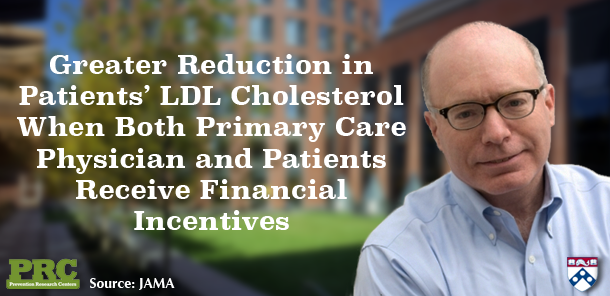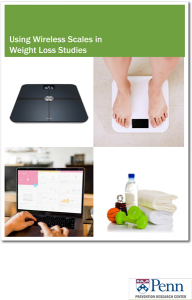
David Asch, MD, a Co-Investigator on the UPenn PRC The Healthy Weigh Study, is the lead author on a new study in JAMA. The study shows that financial incentives for both primary care physicians and patients help with medication compliance which results in a lowering of the patients’ low-density lipoproteins (LDL.) Along with Kevin Volpp, MD, PhD, director of the UPenn PRC and co-principal investigator on The Healthy Weigh Study, Asch and his co-authors are the first to test physician-only and patient-only incentives, compared to incentives shared by patients and physicians.
Lead author David A. Asch, MD, a professor of Medicine and Medical Ethics and Health Policy, and executive director of the Center for Health Care Innovation at Penn Medicine explains “There are medications called statins that can easily lower LDL. Many patients who are prescribed statins stop taking them after a few months. If we could help these individuals get their LDL cholesterols down, we could save a lot of lives.”
“Reducing LDL requires two basic actions,” said senior author Kevin G.M. Volpp, MD, PhD, a professor of Medicine and Health Care Management, vice-chair of Health Policy, and director of the Center for Health Incentives and Behavioral Economics at Penn Medicine. “First, physicians have to prescribe the appropriate medication. Second, patients have to consistently take the medication. Previous studies focused on incentivizing one group or the other have produced only moderate improvements for patients, but when we look at it as a two-way street where patients and physicians each bear responsibility, the findings then become consistent with what we might intuitively expect.”
The study enrolled 340 primary care physicians — and over 1500 of their patients — from three leading medical institutions. Researchers divided physicians and patients into four groups: physician-only incentives, patient-only incentives, both patient and physician incentives, and a control group that received no incentives.
Despite having to share the incentive, the study found that 49 percent of patients in the shared group reached their previously determined LDL goal, compared to 36-40 percent in the other three groups where either no incentives were received or where incentives were only given to either physicians or patients.
Read more here.

